Two transparent plastic sheets of red and blue colour overlap as shown in the Fig. An observer looks at a clear sky through the sheets. What can you say about the colour and brightness of light coming through sections 1, 2 and 3 (see Fig.)
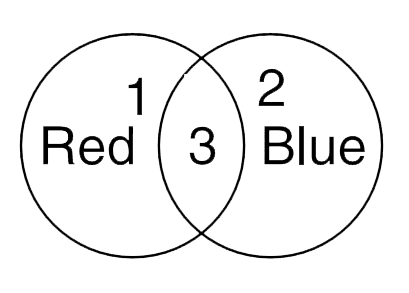
The correct Answer is:Section 1: Red colour, less bright than usual
Section 2: Blue colour, less bright than usual
Section 3: Dark, almost no light.
Step by step video, text & image solution for Two transparent plastic sheets of red and blue colour overlap as shown in the Fig. An observer looks at a clear sky through the sheets. What can you say about the colour and brightness of light coming through sections 1, 2 and 3 (see Fig.) by Physics experts to help you in doubts & scoring excellent marks in Class 12 exams.
Topper's Solved these Questions
- BOOK - ARIHANTCHAPTER - GEOMETRICAL OPTICSEXERCISE - Level 262videos
GEOMETRICAL OPTICS
- BOOK - ARIHANTCHAPTER - GEOMETRICAL OPTICSEXERCISE - Level 39videos
GEOMETRICAL OPTICS
- BOOK - ARIHANTCHAPTER - ELECTROSTATICSEXERCISE - Level 359videos
ELECTROSTATICS
- BOOK - ARIHANTCHAPTER - MAGNETIC EFFECT OF CURRENTEXERCISE - Magnetic effect of Current45videos
MAGNETIC EFFECT OF CURRENT
Similar Questions
What colour do you observe when white light passes through a blue and yellow filter ?
View SolutionA beam of white light falling on a glass prism gets split up into seven colours marked 1 to 7 as shown in the diagram.
A student makes the following statements about the spectrum observed on the screen.
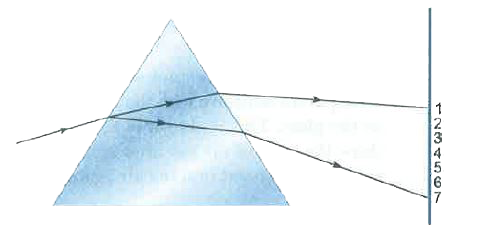
(a) The colours at positions marked 3 and 5 are similar to the colour of the sky and the sky and the colour of gold metal respectively. Is the above statement made by the student correct or incorrect? Justify.
(b) Which two positions correspond closely to the colour of
(i) brinjal, (ii) 'danger’ or stop signal lights?View Solution
Knowledge Check
- Question 1 - Select One
Those substances through which things can be seen, are called transparent. On the other hand, there are some materials through which you are not able to see. These materials are called opaque. The materials through which objects can be seen, but not clearly, are known as translucent. We can therefore group materials as opaque, transparent and translucent. Shopkeepers usually prefer to keep eatables in transparent containers of glass or plastic so that buyers can easily see these items. Otherwise you cannot tell what is kept in a closed wooden box, a cardboard or a metal container.
Which statement is not true about opaque substances?AOpaque substances absorb most of the light falling on them.BWe cannot see the objects through opaque substances.CA mirror is an opaque substance.DOpaque substances reflect most of the light falling on them. - Question 2 - Select One
Are the 1980s and 1990s the era of colour? According to some people, they are Now you can buy radios and electric fans in lavender and pink. Restaurants have an emphasis on flowers and colourful plates. Cars are coming out in pink and aqua.
Even bathroom fixtures are being made in 'honeydew' and 'blond'. Part of the importance of the colour of an object is that the colour affects the way one feels about it. You want a vacuum cleaner to look light and easy, which is why it may be coloured. in pastels and light colours. But gardening equipment and athletic equipment you want to look powerful. You would never find a lawn mower in pink, but red would be fine.
Not very long ago, sheets were always white and refrigerators commonly came in colours like 'old gold''avocado green' and 'coppertone'.
Now those are thought of as old-fashioned, popular colours change because fashion influences everything. In fact, new colours often spring from the fashion industry. It's a lot cheaper to make a blouse or skirt than a sofa.
After people get used to seeing new colours on clothing or towels, they are ready to accept those colours in carpeting, refrigerators or cars. Colour-analysis consultants have been very successful in recent years.
People want to choose the most flattering colours for make up and clothing. Some car designers are even saying that people may be buying cars of the colour that goes with their skin colour. This sounds too extreme. It's hard to believe that people are that impressionable.
According to the author, how a vacuum cleaner can look light and easy?AUse of light plasticBSmall in sizeCUse of pastel and light coloursDNone of the above - Question 3 - Select One
Read the following passages carefully and answer the questions that follow.
Are the 1980s and 1990s the era of colouri According to some people, they are. Now you can buy radios and electric fans in lavender and pink. Restaurants have an emphasis of flowers and colourful plates. Cars are coming out in pink and aqua. Even bathroom fixtures are being made in 'honeydew' and 'blond'. Part of the importance of the colour of an object is that the colour affects the way one feels about it. You want a vacuum cleaner to look light and easy, which is why it may be coloured in pastels and light colours. But gardening equipment and athletic equipment you want to look powerful. You would never find a lawn mower in pink, but red would be fine. Not very long ago, sheets were always white and refrigerators commonly came in colours like 'old gold' avocado green and 'coppertone'. Now those are thought of as old-fashioned, popular colours change because fashion influences everything, In fact, new colours often spring from the fashion industry. It's a lot cheaper to make a blouse or skirt than a sofa. After people get used to seeing new colours on clothing or towels, they are ready to accept those colours in carpeting, refrigerators or cars. Colour-analysis consultants have been very successful in recent years. People want to choose the most flattering colours for make up and clothing. Some car designers are even saying that people may start buying cars of the colour that goes with their skin colour. This sounds too extreme. It's hard to believe that people are that impressionable.
According to the author, how a vacuum cleaner can look light and easy?AUse of light plasticBSmall in sizeCUse of pastel and light coloursDNone of the above
A beam of white light falling on a glass prism gets split up into seven colours marked 1 to 7 as shown in the diagram.
A student makes the following statements about the spectrum observed on the screen.
(a) The colours at positions marked 3 and 5 are similar to the colour of the sky and the colour of gold metal respectively.
Is the above statement made by the student correct or incorrect? Justify.
(b) Which two positions correspond closely to the colour of
(i) brinjal, (ii) 'danger' or stop signal lights?
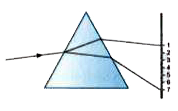 View Solution
View Solutionwhen a sheet of transparent plastic is placed between two crossed palarizes, no light is transmitted. When the sheet is stretched in one direction, some light passes through the crossed polarizers. What is happening ?
View Solution(a) a solution has a pH of 7. Explain how you would you :
(i) increase its pH (ii) decreases its pH
(b) If a solution the colour of the litmus from red to blue, what can you say about its pH ?
(c ) What can you say about the pH of a solution that liberates carbon dioxide from sodium carbonate ?View SolutionTo locate Pole star, you have to look at the two stars at the end of Ursa Major as shown. Imagine a straight line passing through these two stars. Extend this imaginary line towards the north direction. On this line you can locate a star which is not too bright and around which there are no stars. It is the Pole Star. The pole star always appears to remain at the same position in the sky.
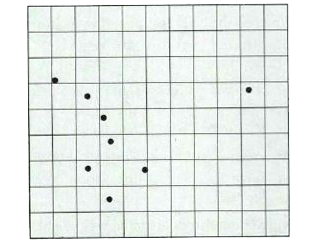
Read the passage and try to answer the question
The stars that we see in the sky are not fixed at one point. Explain why?View SolutionA block o plastic having a thin air cavity (whose thickenss is comparable to wavelength of light waves) is shown in fig. The thickness of air cavity (which can be considered as air wedge for interference pattern) is varying linearly from one end to other as shown.
A broad beam of monochromatic light is incident normally from the top of the plastic box. Some ligth lis reflected back above and below the cavity .The plastic layers than wavelength of incident light . An observer when looking down from top sees an interference pattern consisting of eight dark fringes and seven bright fringe along the wedge. Take wavelength of incident light in air as λ0 and refractive index of plastic as μ
Assume that the thickness of the ends of air cavity are such that formation of fringe takes place there.
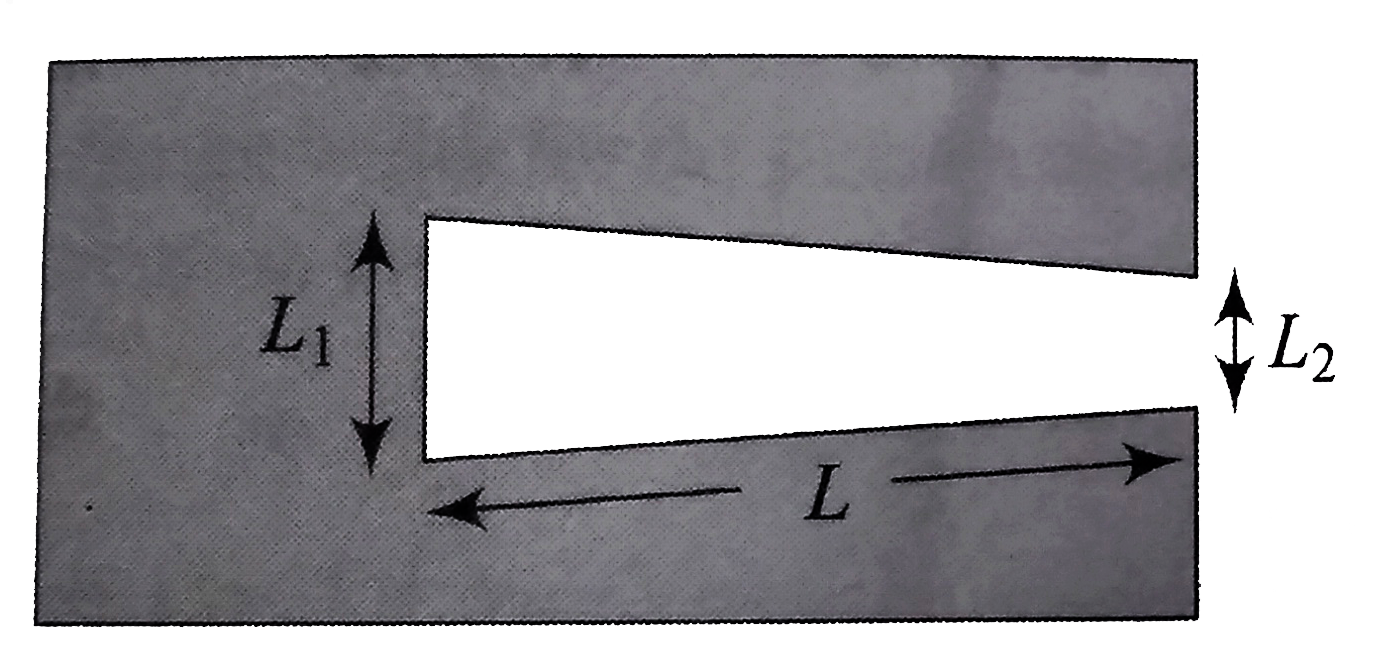
Determine of difference L1−L2=ΔL) in terms of λ0.View Solution

